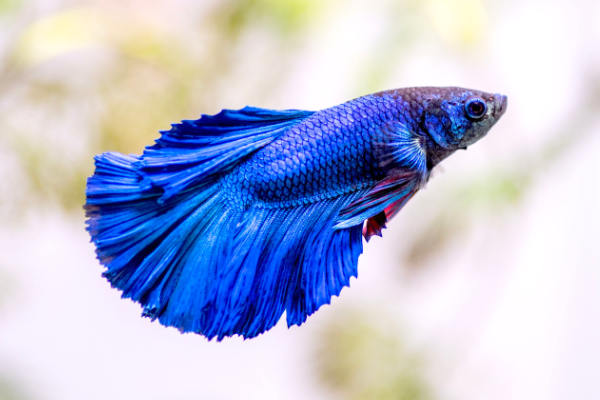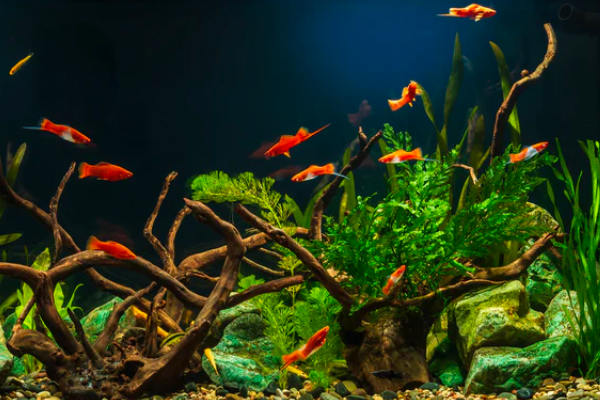Care Guides
Fighter Fish Care Guide
Note: The information below is only relevant for persons intending to keep their fighter in a small bowl/container without filtration.
Maintenance
Every Week
- 100% water change with de-chlorinated tap water. This is based on a 2 Ltr container, smaller containers will need to be done more regularly. Ideally, use a double dose of a chlorine neutralizer that also has the capacity to detoxify ammonia.
- Ensure that the new water is the same temperature, and preferably pH, as the existing water.
- If you have gravel in the bowl/container, rinse it clean of detritus.
- After each water change, re-dose new water with aquarium salt at 1/4 level teaspoon per 2 litres. This reduces the amount of waste the fish produces (ask us how) and heightens resistance to disease and helps prevent nitrate poisoning.
Daily
- If you have live plants in the bowl/container, remove dead leaves etc.
- Remove any uneaten food!
General Advice
- Although fighters are relatively flexible (for a tropical fish) with regard to temperature, water temperatures that fluctuate or are below 22 degrees or fluctuating can be problematic. Consequently, during winter a heater will be needed to maintain the temperature above 20 degrees.
- Always remember that the key to keeping your fighter in good health is waste minimization and clean water. The most common source of problems, such as disease, premature death, etc. is the result of overfeeding and too infrequent (100%) water changes.
Fish Tank Setup
…calculator coming soon.
Axolotl Care Guide
An axolotl, also known as the Mexican Walking Fish, are the larval form of salamanders.
Some species, such as the one kept in Australia, have reverted to a fully aquatic way of life, and never make the transition to a terrestrial animal (walk on land). Although Ambystoma mexicanum stay as a larval form, it does still have the ability to become fully mature adults and reproduce. Available in many colours, axolotls make a great alternative to goldfish.
In 2020, a well-known video game titled Minecraft, especially popular with younger audiences, allowed you to keep an axolotl as a pet. However, Minecraft allows you to take the axolotl out of the tank to play with it. Please do not do this. Axolotls cannot survive outside water.
General Advice
- Due to being active predators, axolotls should be kept in species-only tanks to prevent the unwanted consumption of other pet fish.
- An aquarium of 60L or greater paired with a good quality filter is a must for the adequate care of a single axolotl.
- Being a cold-water species, axolotls prefer a temperate around 17-22°C, although they can sometimes adapt to higher temperatures. Our recommendation is to have your aquarium in an airconditioned room or add a chiller for Queensland summer.
- Optimal pH is neutral (7.0) but will tolerate values between 6.7-7.5.
- Subdued lighting is recommended, so keep the tank away from direct sunlight and high-traffic areas.
- Extra care is needed when handling and medicating axolotls due to them being scaleless. Despite what other people may say, DO NOT take axolotls out of water.
- With amazing powers of regeneration, the loss of a limb or tail can be easily and completely regrown, as long as food and good water quality are maintained.
- Fine sand or no substrate at all should be used for their flooring, as axolotls have a habit of eating their gravel. Larger gravel can become stuck in their tummy, which usually results in death.
Maintenance
Every Week /fortnight
- Drain 20-35% of the water from the tank, preferably with a gravel cleaner.
- Place appropriate amounts of de-chlorinator into the tank with tap water along with 1 teaspoon of Aquarium Salt per 40 Litres.
Once a month:
- Take a bucket of water from the tank and clean out the filter sponge in this water (discarding the water once finished). This ensures the beneficial bacteria is maintained. The rest of the plastic parts can be washed under tap water.
Feeding
- Feed your axolotl once a day to every second day. Overfeeding is your biggest enemy.
- An axolotl should take approximately 30 minutes to eat ALL the food. Remove any uneaten food after 1 hour. As your axolotl becomes accustomed to your feeding schedule, the time for food response and consumption should be greatly reduced (to around 10 minutes).
- Dry pellets, frozen axolotl food, mealworms or blackworms are favourites of axolotls, as well as easy to feed, they greatly reduce the mess created at feeding time.



